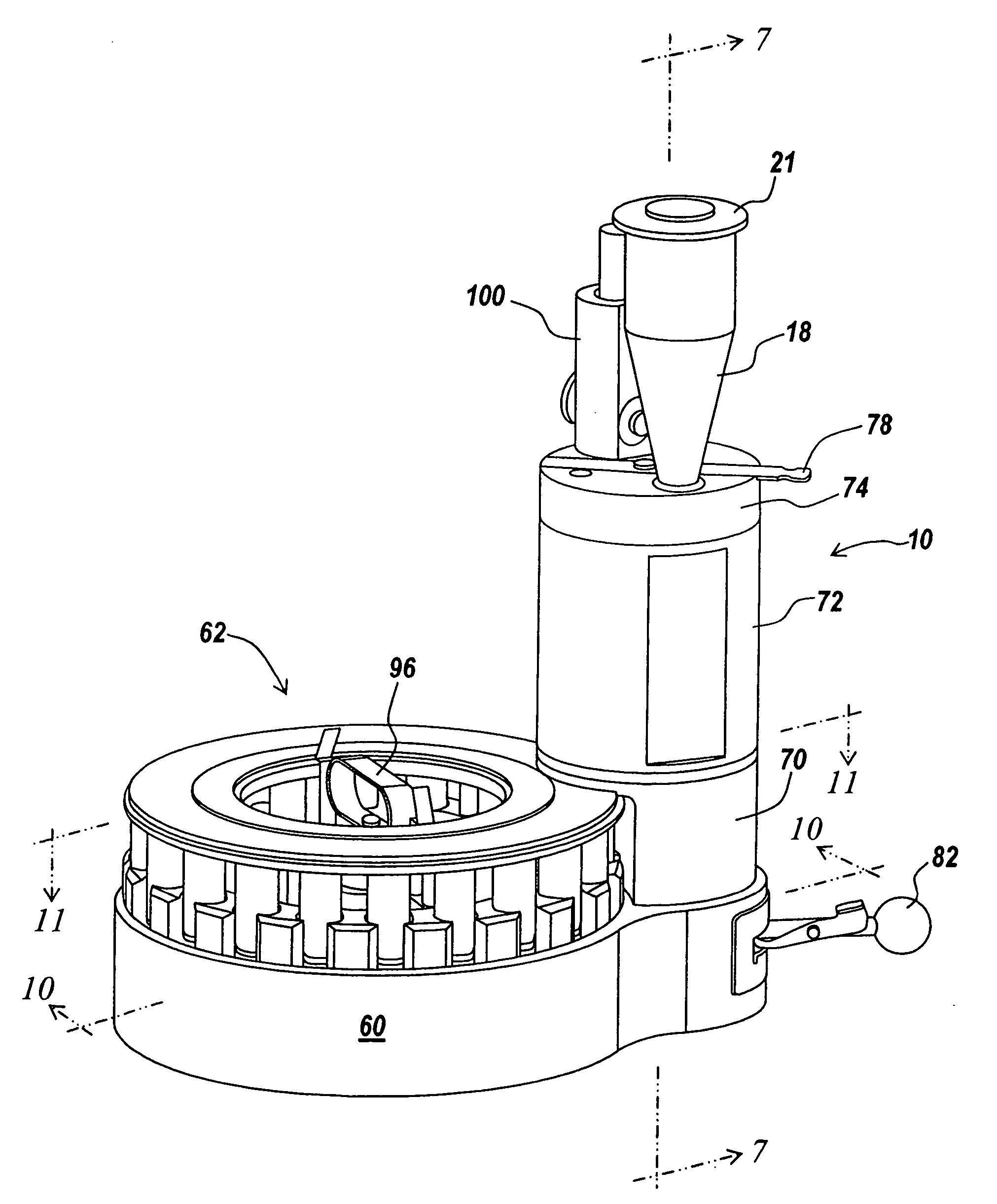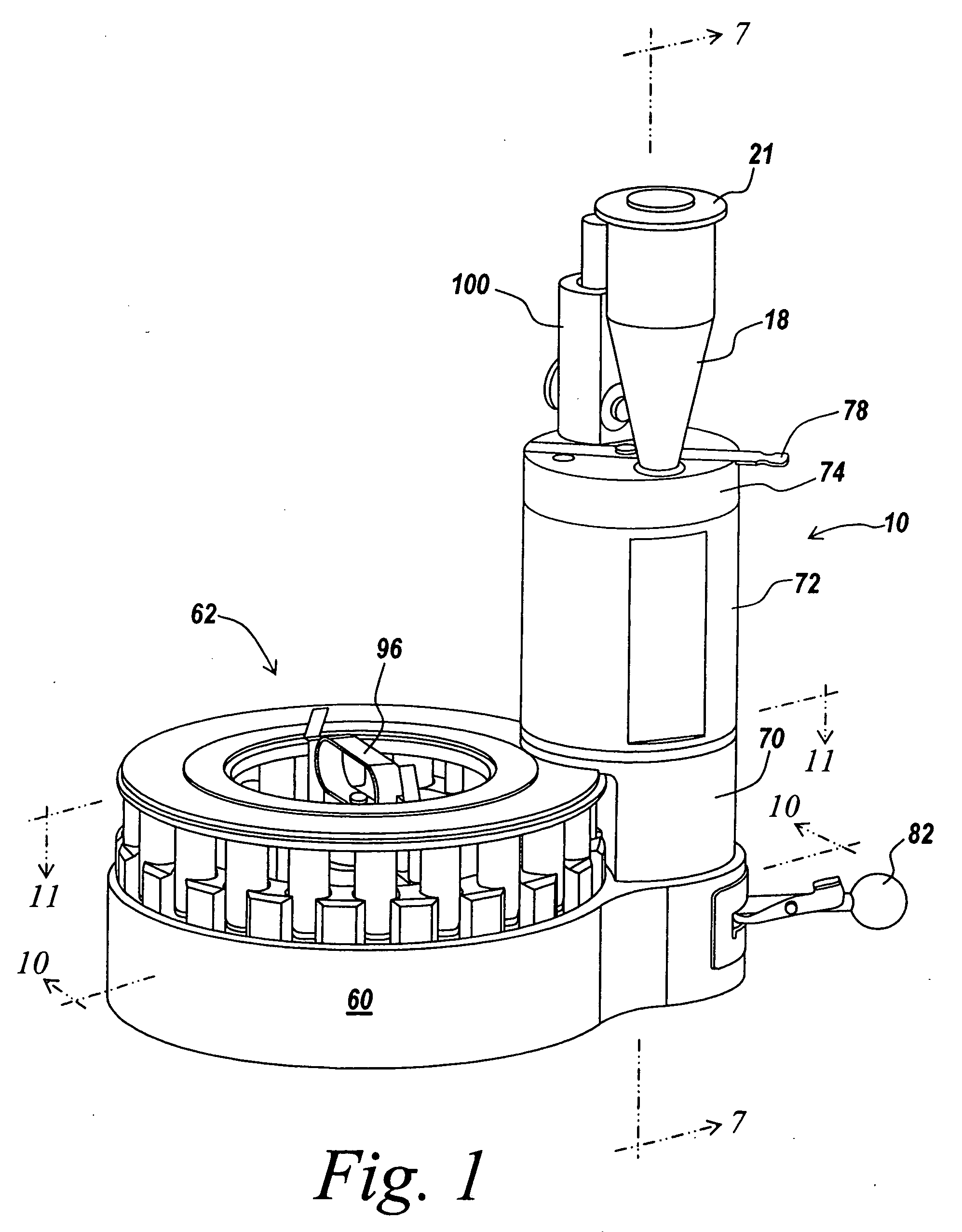Method and apparatus for segregation testing of particulate solids
a technology of particulate solids and segregation, which is applied in the direction of measurement devices, structural/machine measurement, instruments, etc., can solve the problems of entraining particles in the gas stream, reducing the likelihood of gas channeling, so as to reduce cost and material waste, reduce errors and material losses, and less test material
- Summary
- Abstract
- Description
- Claims
- Application Information
AI Technical Summary
Benefits of technology
Problems solved by technology
Method used
Image
Examples
example
[0063] A test chamber 16 mm in diameter was filled with a particulate material to a level of 95 mm. A five micron sintered metal diffuser disk 24 was fitted at the base of the chamber. A “target flow rate” was estimated, by prior test work and theoretical calculations, to be slightly above the lowest level sufficient to sustain fluidization. This target rate was divided by 7, the estimated number of cycles to complete the test, thus determining the increment of velocity Q / A to be added to each successive cycle.
[0064] Upon completion of the test, sixteen 1.2 mil samples, each of which was located at a distinct level or position during the test, were successively recovered from the chamber. Even numbered samples were assayed for percent of intent and odd numbered samples were measured to determine particle size distribution. The results are illustrated in FIG. 6, and show that assay and particle size variations are pronounced, indicating possible segregation problems with this materi...
PUM
| Property | Measurement | Unit |
|---|---|---|
| diameter | aaaaa | aaaaa |
| pressure | aaaaa | aaaaa |
| gas flow rate | aaaaa | aaaaa |
Abstract
Description
Claims
Application Information
 Login to View More
Login to View More - R&D
- Intellectual Property
- Life Sciences
- Materials
- Tech Scout
- Unparalleled Data Quality
- Higher Quality Content
- 60% Fewer Hallucinations
Browse by: Latest US Patents, China's latest patents, Technical Efficacy Thesaurus, Application Domain, Technology Topic, Popular Technical Reports.
© 2025 PatSnap. All rights reserved.Legal|Privacy policy|Modern Slavery Act Transparency Statement|Sitemap|About US| Contact US: help@patsnap.com



